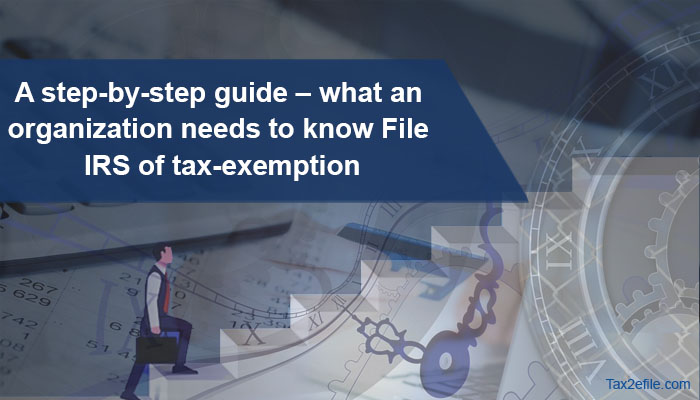- April 6, 2023

IRS Tax-exempt status is a type of status that exempts an organization from paying taxes at the local, state, and federal levels. It is important to note that tax-free items may be reported on a taxpayer’s individual or business tax return, but they are shown only for informational purposes. Tax exemption can also refer to the status of a business that limits its taxable income. In this article, we will discuss the step-by-step process of filing for tax-exempt status with the IRS.
Table of Contents
Filing IRS tax exemption status
To seek tax-exempt status, applying with the IRS is necessary. The standard practice involves completing Form 1023, commonly known as the Application for Recognition of Exemption Under Section 501(c)(3) of the Internal Revenue Code. However, alternative forms may be required to file for an exemption if the organization varies in type or objective.
Certain organizations must submit Form 1024 to confirm their tax-exempt status. This form is necessary to apply for recognition of tax exemption under section 501(a). Additionally, organizations may need to submit Forms 990 or 990-EZ. Before sending these forms to the IRS, they must provide a thorough description of the organization’s structure, activities, and objectives. Including a copy of the entity’s articles of incorporation and other pertinent documents to support the submission is also advisable.
To apply for tax-exempt status, a fee must be submitted to the IRS. This fee amount varies depending on the organization’s type and scope. You can submit your application either by mail or electronically, and the IRS may reach out to you if any questions arise during their review. If your application is approved, you will receive an official message from the agency, confirming your newly acquired tax-exempt status.
Step-by-step guide in filing IRS tax exemption status
The following is the step-by-step instruction for filing tax exemption status with the IRS.
1. To qualify for tax exemption, it is essential to confirm the type of organization you belong to. This includes determining whether you are a non-profit institution, a religious organization, a government entity, or an educational establishment.
2. The next step involves collecting the necessary paperwork to support your application, which may include documents such as your non-profit organization’s articles of incorporation, bylaws, and other pertinent records confirming you meet the criteria for a qualified non-profit. The IRS requires these documents.
3. To apply for tax exemption, submitting the appropriate Form to the IRS is essential. Organizations may require different forms, such as Form 1023 for non-profit entities, Form 1024 for religious organizations, and Form 1028 for governmental or educational institutions. Selecting the right Form that pertains to your organization’s type is crucial.
4. Diligently fill out the form and make sure to include all required documents and details.
5. Send the filled-out Form and necessary paperwork to the IRS as an act of submission.
6. Please note that the IRS may take several months to process your application, so we kindly ask for your patience during this time.
7. The IRS will issue you a letter of exemption confirming your tax-exempt status upon approving your application.
Bottom Line
An entity can become tax-exempt only by meeting the requirements set by the IRS. IT must file the required Forms appropriately to attain tax-exempt status. The taxing experts at Tax2efile can help organizations file this status perfectly without errors and within the deadline.